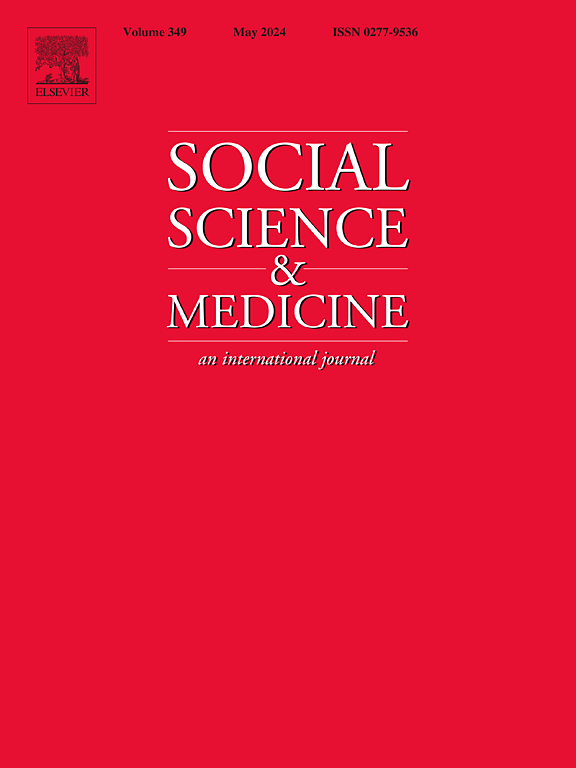框架联盟和加拿大过量危机:阿片类药物营销的案例
IF 4.9
2区 医学
Q1 PUBLIC, ENVIRONMENTAL & OCCUPATIONAL HEALTH
引用次数: 0
摘要
过量危机仍然是北美最紧迫的突发公共卫生事件之一,处方类阿片的营销被认为是导致其升级的一个关键因素。尽管如此,处方类阿片在当前过量危机中的作用,以及在多大程度上可以区分营销和教育,仍然存在高度争议。本研究对通过两次获取信息和隐私(ATIP)请求获得的四次单独磋商进行定性框架分析,探讨了利益相关者如何将处方阿片类药物和过量危机视为政策问题,危机中的营销和教育的责任,以及这些框架如何反映和影响阿片类药物行业和公共卫生经常相互冲突的目标。调查结果表明,虽然一些利益相关者承认处方阿片类药物的使用存在问题,但许多人将危机重新定义为“非法过量危机”,并将营销行为的作用最小化。利益相关者普遍反对任何与处方阿片类药物有关的限制,因为他们担心这会给慢性疼痛患者带来不必要的关注。总体而言,围绕营销和教育的争论是围绕安全供应、减少危害、非法和处方阿片类药物以及制药行业在医疗保健系统中的适当作用的代理分歧。运用“框架联盟”的分析框架,该研究强调了利益相关者的框架和政策利益如何在过量危机优先事项中有所不同和变化,从而导致危机的复杂,重叠结构。鉴于危机的不同社会结构,这项研究揭示了深层次的紧张局势,这些紧张局势助长了围绕过量危机政策的深刻分歧。本文章由计算机程序翻译,如有差异,请以英文原文为准。
Framing coalitions and the Canadian overdose crisis: The case of opioid marketing
The overdose crisis remains one of the most pressing public health emergencies in North America, with the marketing of prescription opioids identified as a key contributor to its escalation. Notwithstanding, the role of prescription opioids in the current overdose crisis, as well as the extent to which marketing and education can be distinguished, remains highly debated.
Using qualitative framing analysis of four separate consultations obtained through two Access to Information and Privacy (ATIP) requests, this study examines how stakeholders framed prescription opioids and the overdose crisis as policy problems, the culpability of marketing and education in the crisis, and how these framings both reflected and influenced the often-conflicting objectives of the opioid industry and public health.
Findings show that while some stakeholders acknowledged problematic prescription opioid use, many reframed the crisis as an “illicit overdose crisis” and minimized the role of marketing practices. Stakeholders commonly opposed any restrictions related to prescription opioids for fear that they would bring undue attention to chronic pain patients. Overall, debates surrounding marketing and education served as proxy disagreements around safe supply, harm reduction, illicit and prescription opioids, and the appropriate role of the pharmaceutical industry in the healthcare system.
Applying the analytic framework of “framing coalitions,” the study highlights how stakeholders' framings and policy interests can differ and shift across overdose crisis priorities, leading to complex, overlapping constructions of the crisis. Given the crisis's varied social constructions, this research sheds light on the deep-seated tensions that fuel the deep divisions surrounding overdose crisis policies.
求助全文
通过发布文献求助,成功后即可免费获取论文全文。
去求助
来源期刊

Social Science & Medicine
PUBLIC, ENVIRONMENTAL & OCCUPATIONAL HEALTH-
CiteScore
9.10
自引率
5.60%
发文量
762
审稿时长
38 days
期刊介绍:
Social Science & Medicine provides an international and interdisciplinary forum for the dissemination of social science research on health. We publish original research articles (both empirical and theoretical), reviews, position papers and commentaries on health issues, to inform current research, policy and practice in all areas of common interest to social scientists, health practitioners, and policy makers. The journal publishes material relevant to any aspect of health from a wide range of social science disciplines (anthropology, economics, epidemiology, geography, policy, psychology, and sociology), and material relevant to the social sciences from any of the professions concerned with physical and mental health, health care, clinical practice, and health policy and organization. We encourage material which is of general interest to an international readership.
 求助内容:
求助内容: 应助结果提醒方式:
应助结果提醒方式:


